How to Cook Salmon for Dogs? Cooking salmon for your dog is fun and good for them, too! Salmon has this special thing called omega-3. It supports your dog in staying healthy and happy.
Now, a special method to cook salmon is just right for your dog. We must ensure it’s cooked safely so it’s yummy and healthy for them.
Are you ready to find out how to make the salmon treat for your dog? Let’s start cooking this amazing treat that your dog will love!
How to Cook Salmon for Dogs?
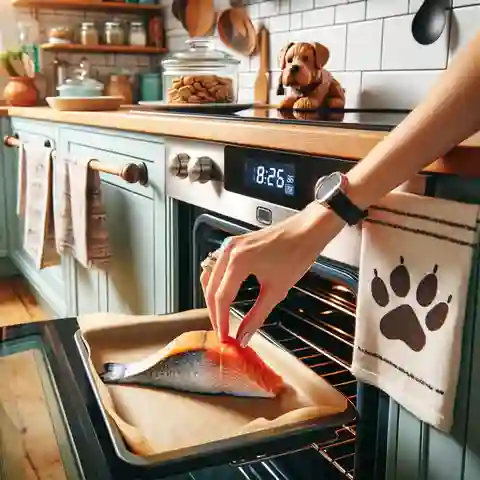
Here’s how to make sure your dog can safely enjoy salmon:
- Bake, Boil, or Steam: These are the best ways to cook salmon for your dog because you don’t need to add anything like oil or butter that could upset their tummy.
- Keep It Plain: Don’t put anything like garlic, onions, salt, or pepper on the salmon. Plain is best for dogs.
- Cook It All the Way: Make sure the salmon is cooked until it’s not pink inside. This makes sure all the germs are gone.
- Let It Cool: Before you give your dog the salmon, let it cool down so it doesn’t burn their mouth.
- Just a Little Bit: Don’t give your dog too much salmon. A small piece is enough. It should only be a treat, not their whole meal.
Cooking salmon for your dog is really easy and you don’t need to add anything fancy to it.
Why Is Salmon Good for Dogs?
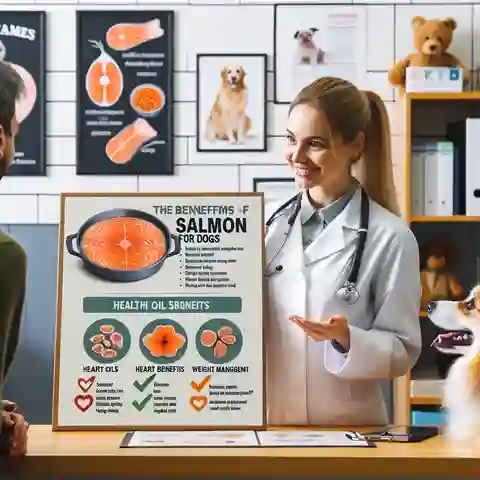
Here is why salmon is so good for your dogs:
- Healthy Oils: Salmon has special oils that are really good for your dog.
- For a Healthy Heart: These oils are also good for your dog’s heart.
- Smart Food: Salmon helps your dog’s brain, especially when they are puppies or older dogs.
- Keeps Dogs in Shape: Salmon is good for helping your dog not get too heavy.
- For Dogs with Food Allergies: If your dog gets sick from other foods, salmon might be a good choice.
No extra stuff on it, and make sure it’s cooked well.
Should You Cook Salmon or Give It Raw?
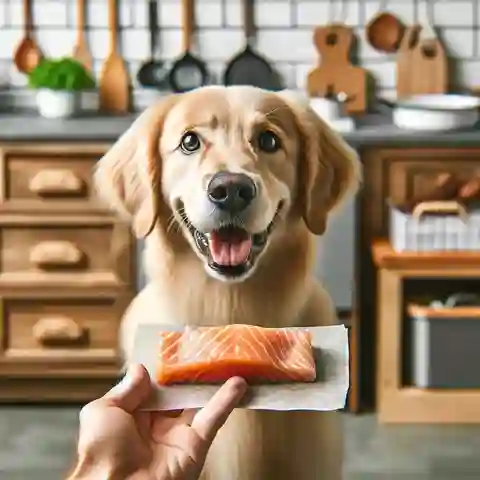
Always cook the salmon for your dog. Raw salmon can have tiny germs that make dogs very sick. Cooking the salmon makes those germs go away.
Can Dogs Eat Salmon Skin?
Yes, dogs can eat salmon skin, but there are a few important things to remember to keep your dog safe and happy.
- Cook It Well: The skin should be fully cooked without any added spices or ingredients that could be harmful to your dog. Cooking the skin well makes sure it’s safe from any bad germs.
- Moderation is Key: It should only be a small part of what your dog eats. Too much fat all at once can upset their tummy.
- Watch Out for Bones: Sometimes, small bones can be stuck to the skin, and these can be dangerous for your dog. Always check the skin carefully and remove any bones before giving it to your dog.
- Healthy Dogs Only: If your dog is overweight or has problems with their pancreas, it’s best to skip the salmon skin. It’s high in fats, and while they’re healthy fats, they can be too much for some dogs.
Salmon skin can be a tasty treat for your dog, full of good nutrients. Just make sure it’s cooked right, given in small amounts, and always check for bones. Remember, not all dogs can handle lots of fats, so it’s best for dogs that are healthy and not overweight.
Can Puppies Eat Salmon Too?
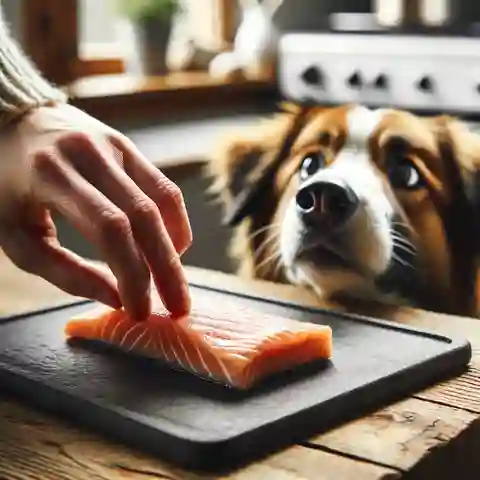
Yes, little puppies can enjoy salmon too, but you need to be extra careful. Puppies’ tummies are more sensitive, so you should start with just a tiny bit of salmon. Make sure it’s cooked all the way through and doesn’t have any bones.
Puppies need different food than grown-up dogs to help them grow up healthy and strong. It’s a good idea to talk to a vet before you start giving your puppy salmon or any new food.
How Much Salmon Can a Dog Eat?

The amount of salmon your dog can eat depends on their size, weight, and overall health. Here’s a simple guideline:
- Small Dogs: For smaller breeds, a few small bites (1 to 2 tablespoons) of cooked salmon once or twice a week is sufficient.
- Medium to Large Dogs: Larger dogs can have larger portions, ranging from 3 to 4 tablespoons up to a quarter cup, depending on their size and dietary needs.
Remember, salmon should only be a small part of your dog’s overall diet, making up no more than 10% of their total food intake. The rest should come from their regular, balanced dog food.
How Often Can Dogs Eat Salmon?
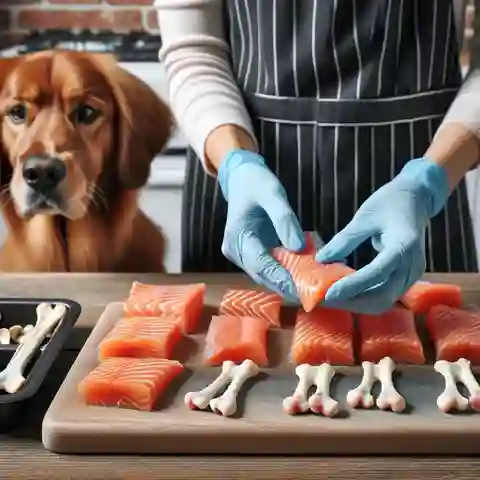
Salmon is best served as an occasional treat rather than a daily part of your dog’s diet. Feeding your dog salmon once or twice a week is a good frequency. This ensures they get the health benefits without any negative side effects from over-consumption.
Are There Any Risks in Feeding Salmon to Dogs?

There are a few risks to be aware of:
- Beware of Bones: Salmon bones are tiny and sharp. They can get stuck in your dog’s throat or cause tummy troubles. Always check the salmon and take out any bones before your dog eats it.
- Cook the Salmon First: Don’t give your dog raw salmon. It can have tiny bugs that make dogs very sick, and it could even be deadly. Make sure you cook the salmon well before letting your dog have any.
- Too Much Fat Can Be Bad: Even though salmon has good fats, eating too much can make dogs sick with a tummy problem called pancreatitis. It’s important to only give them a little bit.
- Some Salmon May Have Bad Stuff: Salmon from some places might have harmful things like heavy metals. Picking wild salmon and not giving it to your dog too often can help avoid this problem.
- Allergies Can Happen: Some dogs might be allergic to salmon. If it’s your dog’s first time trying salmon, give them a tiny bit and watch how they react.
Feeding your dog salmon can be a tasty treat that’s also good for them, but it’s important to do it the right way. This means taking out all the bones, cooking the salmon well, not giving them too much, and being careful about where the salmon comes from. By keeping an eye on these things, you can help make sure your dog enjoys their salmon safely.
Do You Need to Remove Bones from Salmon for Dogs?
Absolutely, yes! Before your dog can enjoy salmon, you need to make sure all the bones are gone. These bones can be really tiny and sharp. If your dog eats them, they could choke or even get hurt inside. Always double-check the salmon and take out any bones to keep your furry friend safe.
What Not to Add to Your Dog’s Salmon

Cooking salmon for your dog means keeping it very simple. Some things we might like in our food can actually be bad for dogs. Here’s what you should not put in your dog’s salmon:
- Onions and Garlic: These are no-nos because they can upset your dog’s stomach and are really bad for their blood.
- Salt: Dogs can get really sick from too much salt. It can cause vomiting, diarrhea, and other serious problems.
- Oil and Butter: Even though a little might not hurt, it’s best to skip these. Too much fat can make your dog very sick with pancreatitis.
- Spices and Herbs: What might taste good to us can make dogs feel pretty bad.
The safest way to cook salmon for your dog is to not add anything to it. Just cook it plain, and your dog can enjoy this tasty and healthy treat without any worries.
How do you know if your dog is allergic to salmon?
Just like people, dogs can have allergies too. If your dog eats salmon and is allergic, you might notice some signs. Here’s what to look out for:
- Itchy Skin: Your dog might scratch a lot or have red, irritated skin.
- Stomach Trouble: Look for signs like vomiting or diarrhea. This means the salmon didn’t sit well with them.
- Swelling: Sometimes, their face or ears might get puffy.
If you see any of these signs after your dog eats salmon, it’s important to talk to your vet.
Is it better to bake, boil, or grill salmon for dogs?
When it comes to cooking salmon for your dog, there are a few good ways to do it. You can bake, boil, or steam it. Each way is safe and healthy, but there are some things to think about:
- Baking: This is a great way to cook salmon without adding extra fat. Just make sure not to use any seasoning.
- Boiling or Steaming: These methods keep the salmon simple and plain, which is perfect for dogs.
Grilling is okay too, but you have to be careful not to char it or add seasonings that could be bad for your dog.
Storing Cooked Salmon for Your Dog

After cooking salmon for your dog, you might have leftovers. Here’s how to keep it safe and fresh:
- Cool it Down: Let the salmon cool to room temperature before you store it.
- Refrigerator: Put the salmon in a covered container and keep it in the fridge. It’s good for about three days.
- Freezer: If you have a lot left, you can freeze the salmon. Wrap it well or put it in a freezer bag. It can stay frozen for up to three months. When you’re ready to use it, just thaw it in the fridge.
When you give your dog salmon from the fridge or freezer, let it come to room temperature or warm it up a little so it’s not too cold for them to eat.
Alternatives to salmon for dogs with fish allergies
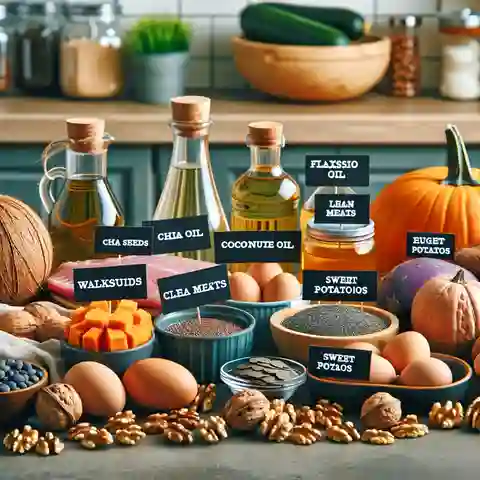
If your dog can’t eat fish because it makes them itch or feel sick, don’t worry! There are other yummy things you can give them that are still really good for their fur and skin. Here are some of the best ones:
- Flaxseed Oil or Ground Flaxseed: This is a plant that has a special kind of oil, omega-3, which makes your dog’s coat shiny and skin healthy.
- Chia Seeds: These tiny seeds are packed with good oils, omega-3s, and they help your dog stay the right weight because they have a lot of fiber.
- Coconut Oil: This oil is great for making your dog’s skin nice and smooth, helps their tummy feel good, and gives them a little energy boost.
- Walnuts: These nuts are good for your dog because they have a plant oil called ALA. Just give them a little bit and make sure they’re not salty. Remember, some nuts are bad for dogs, so only give them walnuts.
- Lean Meats: Chicken, turkey, and beef that don’t have a lot of fat are good for giving your dog the protein they need without making them eat fish.
- Eggs: Eggs are great because they have protein, fats, and vitamins that help your dog’s fur and skin look good. You can cook them and mix them into your dog’s food.
- Sweet Potatoes: These are orange and sweet, and they have lots of good stuff for your dog’s skin and to help them fight off sickness.
- Pumpkin: Pumpkin is good for your dog’s fur and helps their tummy. Make sure it’s just plain pumpkin and not the kind with spices in it.
These foods can help your dog feel good and look great, even without eating fish!
In conclusion, cooking salmon for your dog is an ideal method to provide them with something special that’s also good for them. Salmon has omega-3 fatty acids, supporting their skin and fur and helping them feel healthy.
But we need to ensure we cook the salmon correctly. It should be plain, with no extra stuff like spices or bones, and it must be boiled all through.
If your dog has never been early, begin with a little piece to ensure they like it and it doesn’t upset their tummy.
Salmon is just a treat, not the main part of their diet. Your dog must still consume their common dog food most of the time.
So, why not cook some salmon for your dog? It’s an easy way to add something special to their diet.



